Non-Contact Fatigue Estimation in Healthy Individuals Using Azure Kinect: Contribution of Multiple Kinematic Features
Abstract
1. Introduction
- A feasibility evaluation of non-contact fatigue estimation in healthy young adults performing a reproducible movement;
- The definition of 24 kinematic features from 32 joints;
- An assessment of class imbalance handling strategies and their impact on performance.
2. Related Work
3. Materials and Methods
3.1. Participants
3.2. Experimental Protocol and Labeling
3.3. Data Acquisition (RGB-D Capture and Body Tracking)
3.4. Feature Extraction
3.5. Classification and Evaluation
4. Results
4.1. Classification Performance
4.2. ROC Analysis
4.3. Confusion Matrices
4.4. Feature Importance
5. Discussion
6. Conclusions
Supplementary Materials
Author Contributions
Funding
Institutional Review Board Statement
Informed Consent Statement
Data Availability Statement
Acknowledgments
Conflicts of Interest
Abbreviations
| AUC | area under the ROC curve |
| BMI | body mass index |
| CR10 | Borg Category-Ratio 10 scale |
| DK | Developer Kit (Azure Kinect DK) |
| EMG | electromyography |
| LOSO | leave-one-subject-out cross-validation |
| RF | random forest |
| RGB-D | red–green–blue plus depth |
| ROC | receiver operating characteristic |
| SDK | Software Development Kit |
References
- Booth, F.W.; Roberts, C.K.; Laye, M.J. Lack of exercise is a major cause of chronic diseases. Compr. Physiol. 2012, 2, 1143–1211. [Google Scholar] [CrossRef] [PubMed]
- Shaffer, F.; Ginsberg, J.P. An overview of heart rate variability metrics and norms. Front. Public Health 2017, 5, 258. [Google Scholar] [CrossRef] [PubMed]
- Gualtieri, L.; Rauch, N.; Piciullo, A.; Melnyk, A.; Lamberti, F.; Prattichizzo, D. Wearable sensors for biomechanical analysis: A review of current applications and future directions in ergonomics. Sensors 2021, 21, 4728. [Google Scholar] [CrossRef]
- Chowdhury, R.H.; Reaz, M.B.I.; Ali, M.A.B.M.; Bakar, A.A.A.; Chellappan, K.; Chang, T.G. Surface electromyography signal processing and classification techniques. Sensors 2013, 13, 12431–12466. [Google Scholar] [CrossRef] [PubMed]
- Patel, S.; Park, H.; Bonato, P.; Chan, L.; Rodgers, M. A review of wearable sensors and systems with application in rehabilitation. J. Neuroeng. Rehabil. 2012, 9, 21. [Google Scholar] [CrossRef] [PubMed]
- Merces, L.; Ferro, L.M.M.; Thomas, A.; Karnaushenko, D.D.; Luo, Y.; Egunov, A.I.; Zhang, W.; Bandari, V.K.; Lee, Y.; McCaskill, J.S.; et al. Bio-Inspired Dynamically Morphing Microelectronics toward High-Density Energy Applications and Intelligent Biomedical Implants. Adv. Mater. 2024, 36, e2313327. [Google Scholar] [CrossRef]
- Bandodkar, A.J.; Choi, J.; Lee, S.P.; Jeang, W.J.; Agyare, P.; Gutruf, P.; Wang, S.; Sponenburg, R.A.; Reeder, J.T.; Schon, S.; et al. Soft, Skin-Interfaced Microfluidic Systems with Passive Galvanic Stopwatches for Precise Chronometric Sampling of Sweat. Adv. Mater. 2019, 31, 1902109. [Google Scholar] [CrossRef]
- Shotton, J.; Fitzgibbon, A.; Cook, M.; Sharp, T.; Finocchio, M.; Moore, R.; Kipman, A.; Blake, A. Real-time human pose recognition in parts from single depth images. In Proceedings of the 2011 IEEE Conference on Computer Vision and Pattern Recognition (CVPR), Colorado Springs, CO, USA, 20–25 June 2011; pp. 1297–1304. [Google Scholar] [CrossRef]
- Clark, R.A.; Pua, Y.H.; Fortin, K.; Ritchie, C.; Webster, K.E.; Denehy, L.; Bryant, A.L. Validity of the Microsoft Kinect for assessment of postural control. Gait Posture 2012, 36, 372–377. [Google Scholar] [CrossRef] [PubMed]
- Pfister, A.; West, A.M.; Bronner, S.; Noah, J.A. Comparative abilities of Microsoft Kinect and Vicon 3D motion capture for gait analysis. J. Med. Eng. Technol. 2014, 38, 274–280. [Google Scholar] [CrossRef]
- Albert, J.A.; Arnrich, B. A computer vision approach to continuously monitor fatigue during resistance training. Biomed. Signal Process. Control 2024, 89, 105701. [Google Scholar] [CrossRef]
- Zhao, X.; Zheng, Y.; Yu, Z.; Song, A. Construction of Kinect-based measuring and monitoring system for the degree of employee’s fatigue. J. Adv. Comput. Intell. Intell. Inform. 2014, 18, 56–63. [Google Scholar] [CrossRef]
- Wakimoto, K.; Hashimoto, Y.; Kamata, M.; Hori, Y. Fatigue estimation based on Laban movement analysis using Kinect. Syst. Integr. 2012, 5, 109–116. [Google Scholar]
- Julious, S.A. Sample size of 12 per group rule of thumb for a pilot study. Pharm. Stat. 2005, 4, 287–291. [Google Scholar] [CrossRef]
- Lancaster, G.A.; Dodd, S.; Williamson, P.R. Design and analysis of pilot studies: Recommendations for good practice. J. Eval. Clin. Pract. 2004, 10, 307–312. [Google Scholar] [CrossRef]
- Hertzog, M.A. Considerations in determining sample size for pilot studies. Res. Nurs. Health 2008, 31, 180–191. [Google Scholar] [CrossRef] [PubMed]
- Microsoft. Azure Kinect Body Tracking SDK v1.1.x—API Reference. Available online: https://microsoft.github.io/Azure-Kinect-Body-Tracking/release/1.1.x/index.html (accessed on 20 September 2025).
- Microsoft. Azure Kinect Body Tracking SDK v1.1.2—Download Page. Available online: https://www.microsoft.com/en-us/download/details.aspx?id=104221 (accessed on 20 September 2025).
- Microsoft. Azure Kinect DK—Product Page. Available online: https://azure.microsoft.com/en-us/products/kinect-dk (accessed on 20 September 2025).
- Microsoft. Azure Kinect Sensor SDK—API Reference. Available online: https://microsoft.github.io/Azure-Kinect-Sensor-SDK/master/index.html (accessed on 20 September 2025).
- Microsoft. Azure Kinect Body Tracking—Body Joints (Joint Hierarchy). Microsoft Learn. Available online: https://learn.microsoft.com/en-us/previous-versions/azure/kinect-dk/body-joints (accessed on 13 October 2025).
- Vøllestad, N.K. Measurement of human muscle fatigue. J. Neurosci. Methods 1997, 74, 219–227. [Google Scholar] [CrossRef]
- Gandevia, S.C. Spinal and supraspinal factors in human muscle fatigue. Physiol. Rev. 2001, 81, 1725–1789. [Google Scholar] [CrossRef] [PubMed]
- Merletti, R.; Parker, P.A. Electromyography: Physiology, Engineering, and Non-Invasive Applications; Wiley-IEEE Press: Hoboken, NJ, USA, 2004. [Google Scholar] [CrossRef]
- Aguirre, A.; Pinto Bernal, M.J.; Cifuentes, C.A.; Perdomo, O.; Díaz, C.A.R.; Múnera, M. Machine Learning Approach for Fatigue Estimation in Sit-to-Stand Exercise. Sensors 2021, 21, 5006. [Google Scholar] [CrossRef] [PubMed]
- Zhang, J.; Lockhart, T.E.; Soangra, R. Classifying Lower Extremity Muscle Fatigue during Walking Using Machine Learning and Inertial Sensors. Ann. Biomed. Eng. 2014, 42, 600–612. [Google Scholar] [CrossRef] [PubMed]
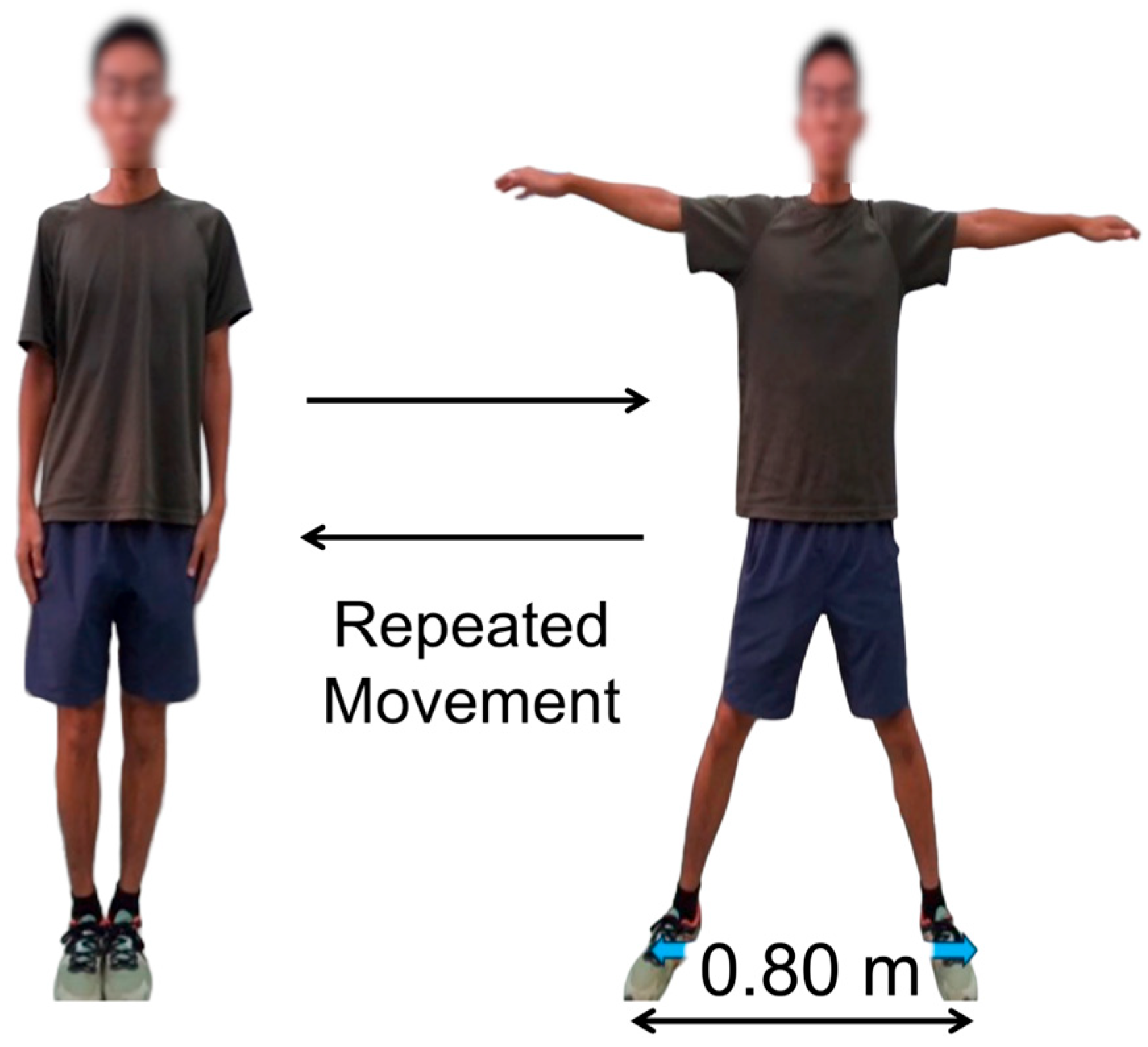
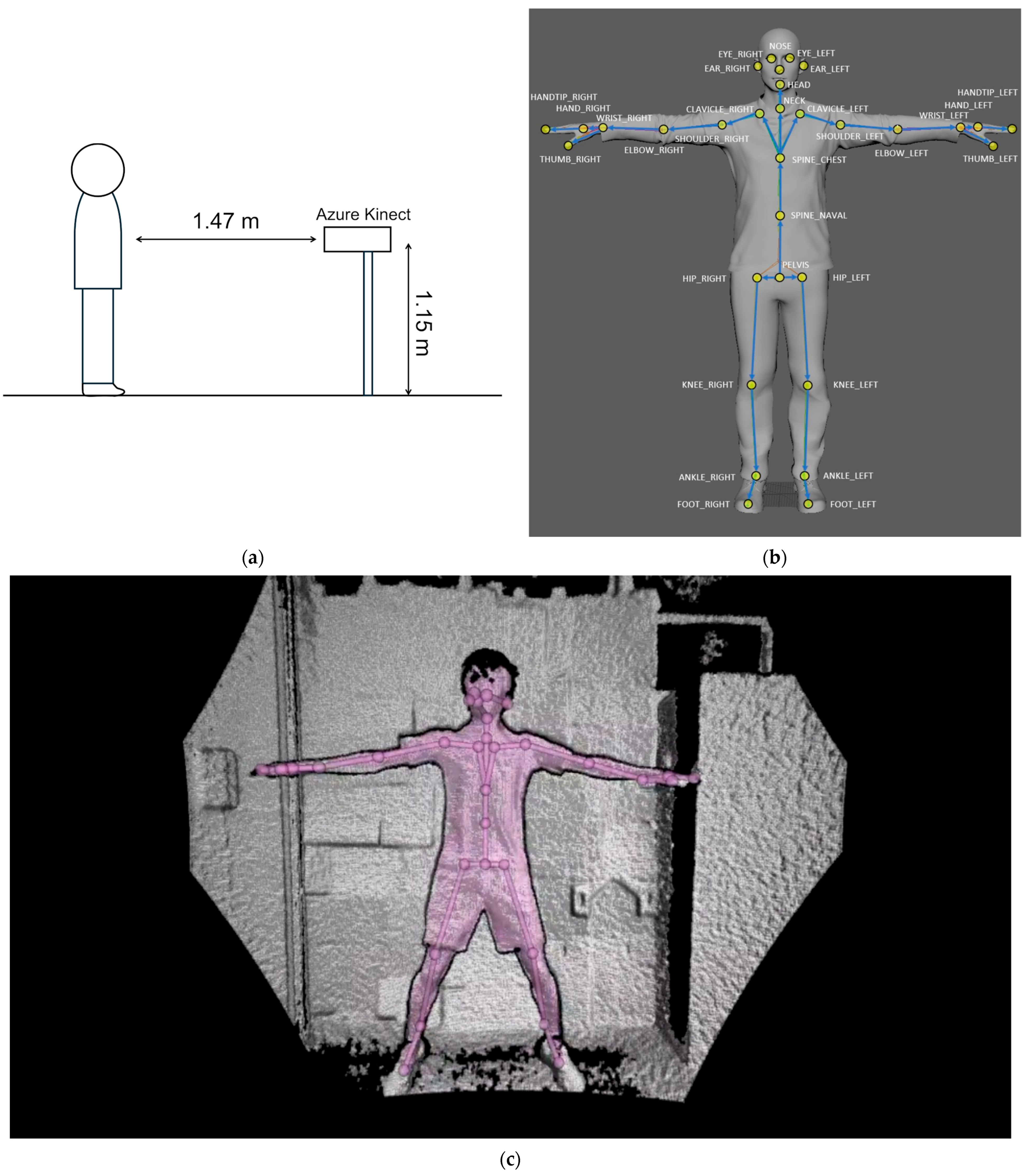
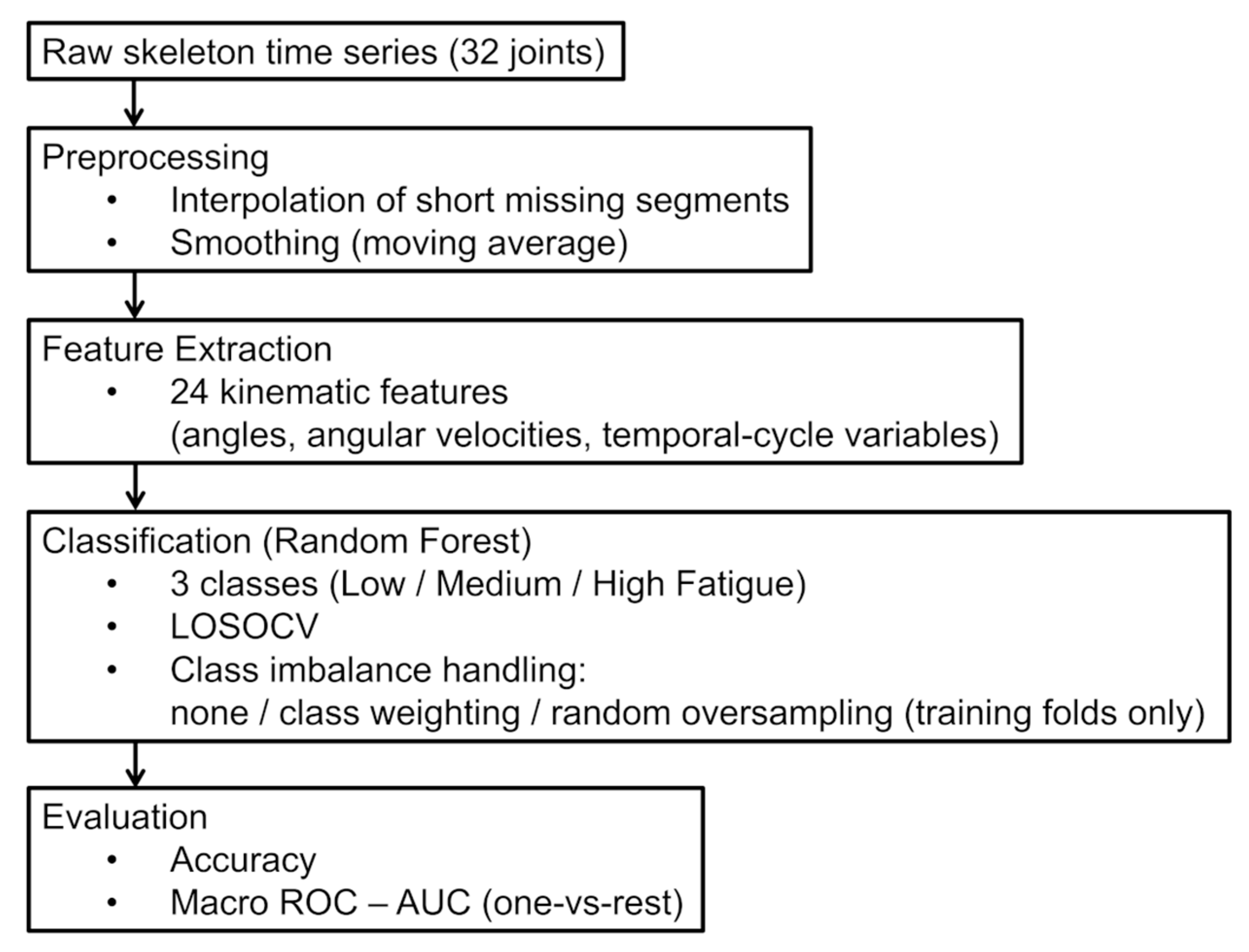
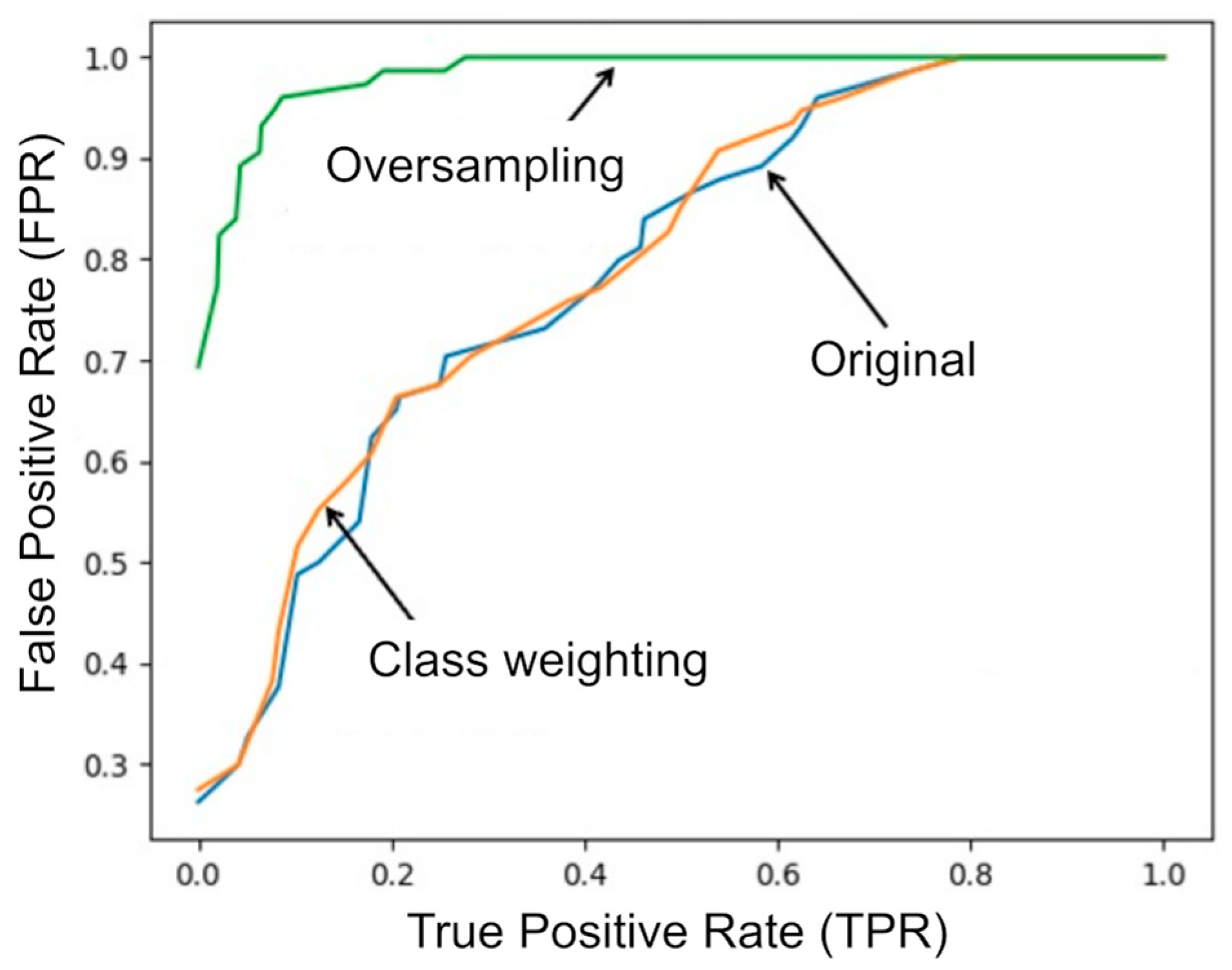
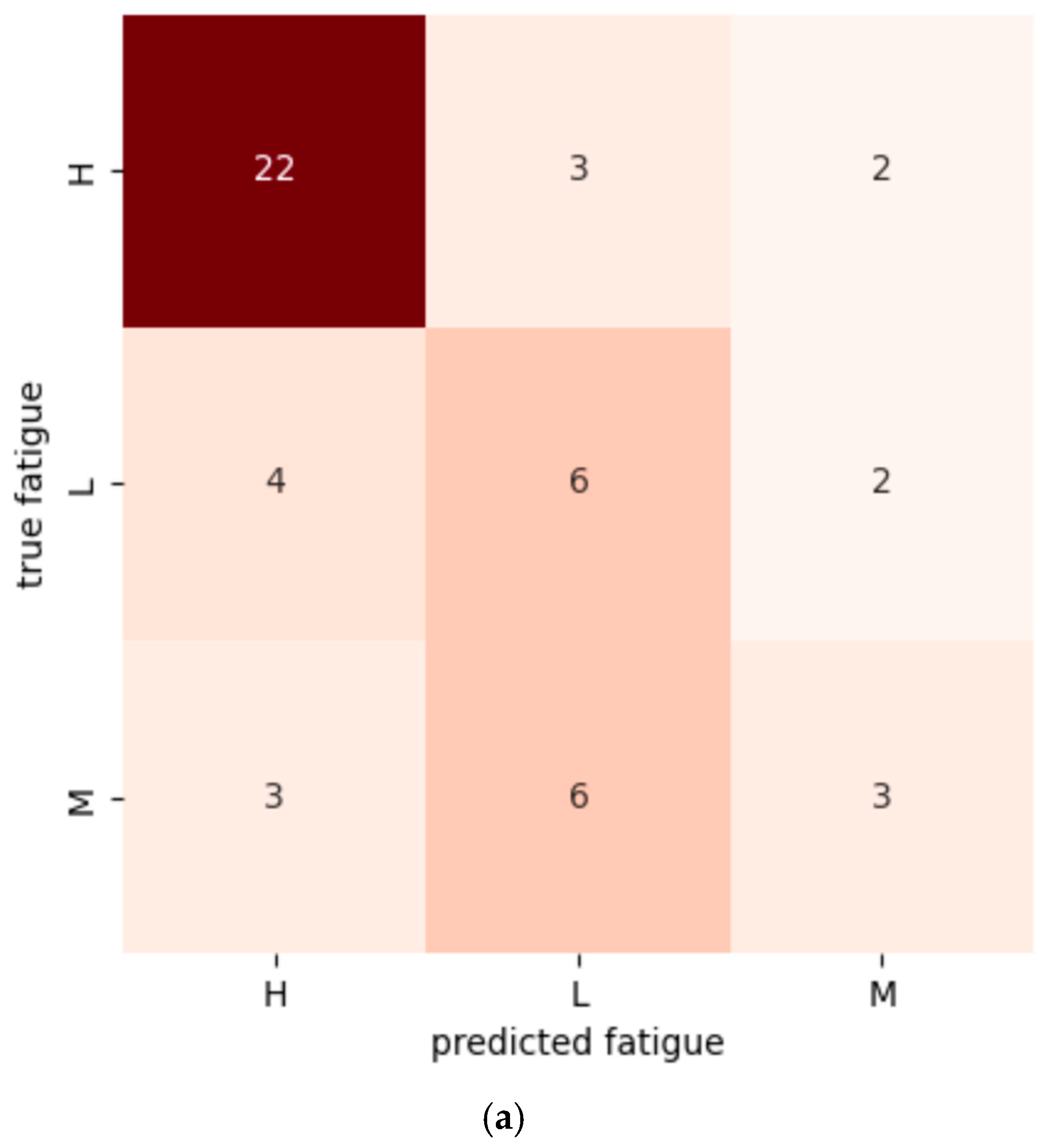

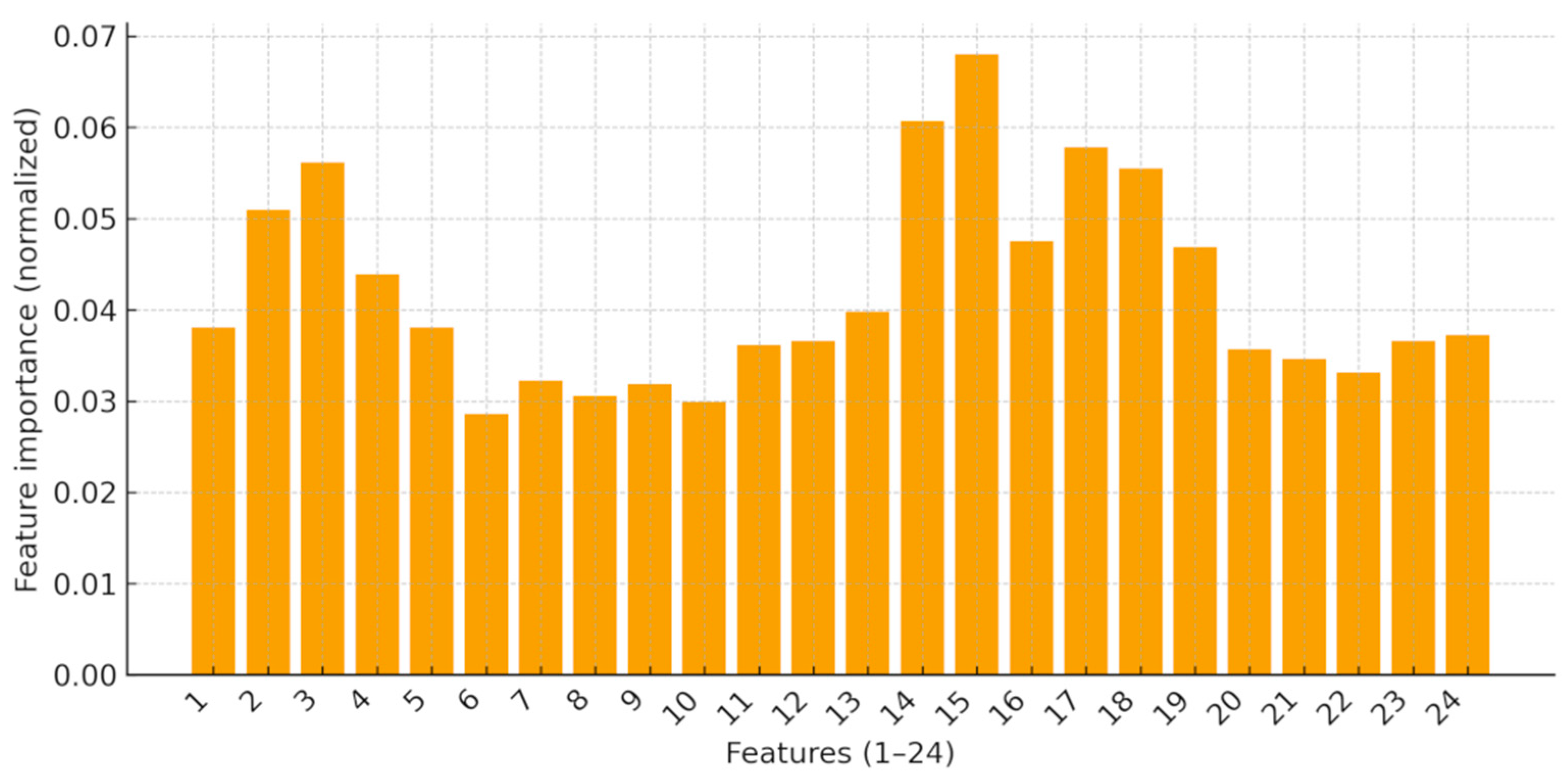
| Category | Value |
|---|---|
| Participants (n) | 10 |
| Sex | 8 male, 2 female |
| Age (y), mean ± SD | 18.5 ± 0.8 (17–19) |
| Height 1 (cm), mean ± SD | 166.2 ± 9.5 (153.0–178.0) |
| Mass 1 (kg), mean ± SD | 54.8 ± 7.0 (46.7–64.0) |
| BMI 2 (kg/m2), mean ± SD | 19.8 ± 1.3 (17.4–22.4) |
| Feature ID | Description |
|---|---|
| 1 | Mean hip–knee opening angle (left leg, close → open) |
| 2 | Mean hip–knee opening angle (right leg, close → open) |
| 3 | Mean shoulder abduction angle (left arm, close → open) |
| 4 | Mean shoulder abduction angle (right arm, close → open) |
| 5 | Peak angular velocity (left leg, close → open) |
| 6 | Peak angular velocity (right leg, close → open) |
| 7 | Peak angular velocity (left arm, close → open) |
| 8 | Peak angular velocity (right arm, close → open) |
| 9 | Cycle time (left leg, close → open) |
| 10 | Cycle time (right leg, close → open) |
| 11 | Cycle time (left arm, close → open) |
| 12 | Cycle time (right arm, close → open) |
| 13 | Minimum angular velocity (left leg, open → close) |
| 14 | Minimum angular velocity (right leg, open → close) |
| 15 | Minimum angular velocity (left arm, open → close) |
| 16 | Minimum angular velocity (right arm, open → close) |
| 17 | Cycle time (left leg, open → close) |
| 18 | Cycle time (right leg, open → close) |
| 19 | Cycle time (left arm, open → close) |
| 20 | Cycle time (right arm, open → close) |
| 21 | Inter-cycle interval (left leg, open → open) |
| 22 | Inter-cycle interval (right leg, open → open) |
| 23 | Inter-cycle interval (left arm, open → open) |
| 24 | Inter-cycle interval (right arm, open → open) |
| Condition | Accuracy | Macro ROC AUC |
|---|---|---|
| No correction | 0.61 | 0.71 |
| Class weighting | 0.73 | 0.85 |
| Oversampling | 0.86 | 0.98 |
| Study (Year) | Modality | Participants | Task/Setting | Labels (Classes) | Top Metric (As Reported) |
|---|---|---|---|---|---|
| This work | Non-contact depth camera (Azure Kinect; skeleton tracking) | n = 10, healthy young adults | Simple reproducible whole-body movement | Borg CR10 (3: Low/Med/High) | Accuracy 0.86; macro ROC AUC 0.98 |
| Aguirre et al., Sensors 2021 [25] | Kinect V2 + wearable HR (Zephyr) | n = 60 healthy volunteers | Sit-to-stand, 120 s; stop if HR > 90% MHR or Borg = 10 | Three fatigue conditions (low/moderate/high) | Accuracy 82.5% |
| Zhang, Lockhart & Soangra, Ann. Biomed. Eng. 2014 [26] | IMU (lower-limb) + SVM | n = 17 (29 ± 11 y) | Walking; fatigue induced by squats to 60% baseline MVE 2 | Binary: fatigue vs. no-fatigue | Accuracy 96% |
Disclaimer/Publisher’s Note: The statements, opinions and data contained in all publications are solely those of the individual author(s) and contributor(s) and not of MDPI and/or the editor(s). MDPI and/or the editor(s) disclaim responsibility for any injury to people or property resulting from any ideas, methods, instructions or products referred to in the content. |
© 2025 by the authors. Licensee MDPI, Basel, Switzerland. This article is an open access article distributed under the terms and conditions of the Creative Commons Attribution (CC BY) license (https://creativecommons.org/licenses/by/4.0/).
Share and Cite
Yamada, T.; Kondo, K. Non-Contact Fatigue Estimation in Healthy Individuals Using Azure Kinect: Contribution of Multiple Kinematic Features. Sensors 2025, 25, 6633. https://doi.org/10.3390/s25216633
Yamada T, Kondo K. Non-Contact Fatigue Estimation in Healthy Individuals Using Azure Kinect: Contribution of Multiple Kinematic Features. Sensors. 2025; 25(21):6633. https://doi.org/10.3390/s25216633
Chicago/Turabian StyleYamada, Takafumi, and Kai Kondo. 2025. "Non-Contact Fatigue Estimation in Healthy Individuals Using Azure Kinect: Contribution of Multiple Kinematic Features" Sensors 25, no. 21: 6633. https://doi.org/10.3390/s25216633
APA StyleYamada, T., & Kondo, K. (2025). Non-Contact Fatigue Estimation in Healthy Individuals Using Azure Kinect: Contribution of Multiple Kinematic Features. Sensors, 25(21), 6633. https://doi.org/10.3390/s25216633







